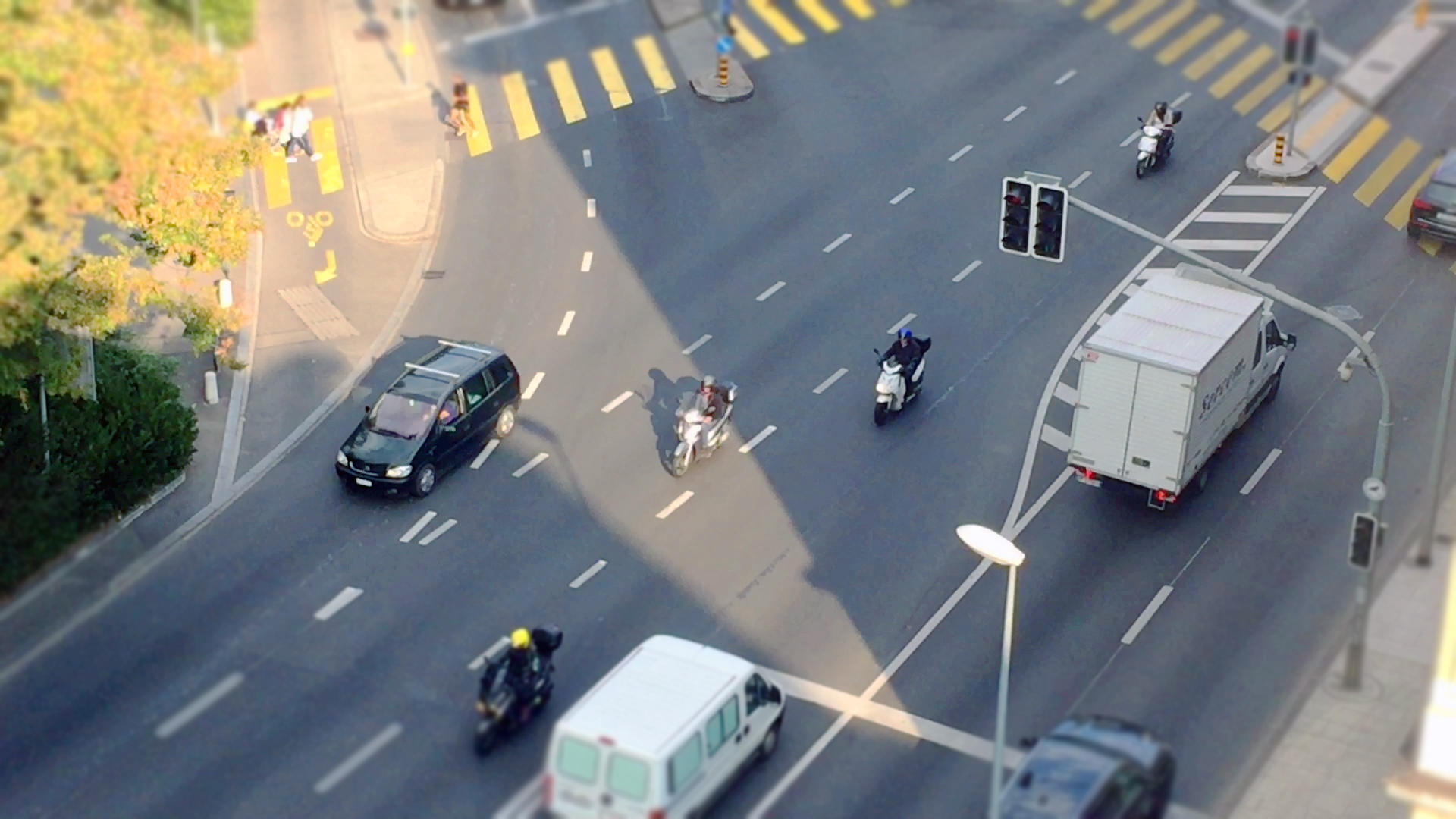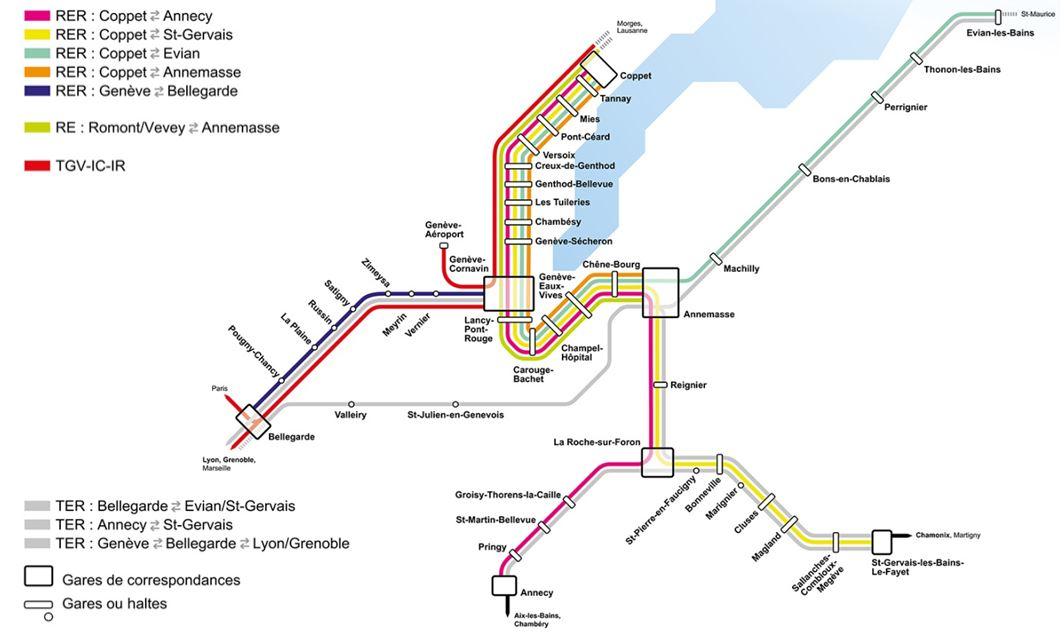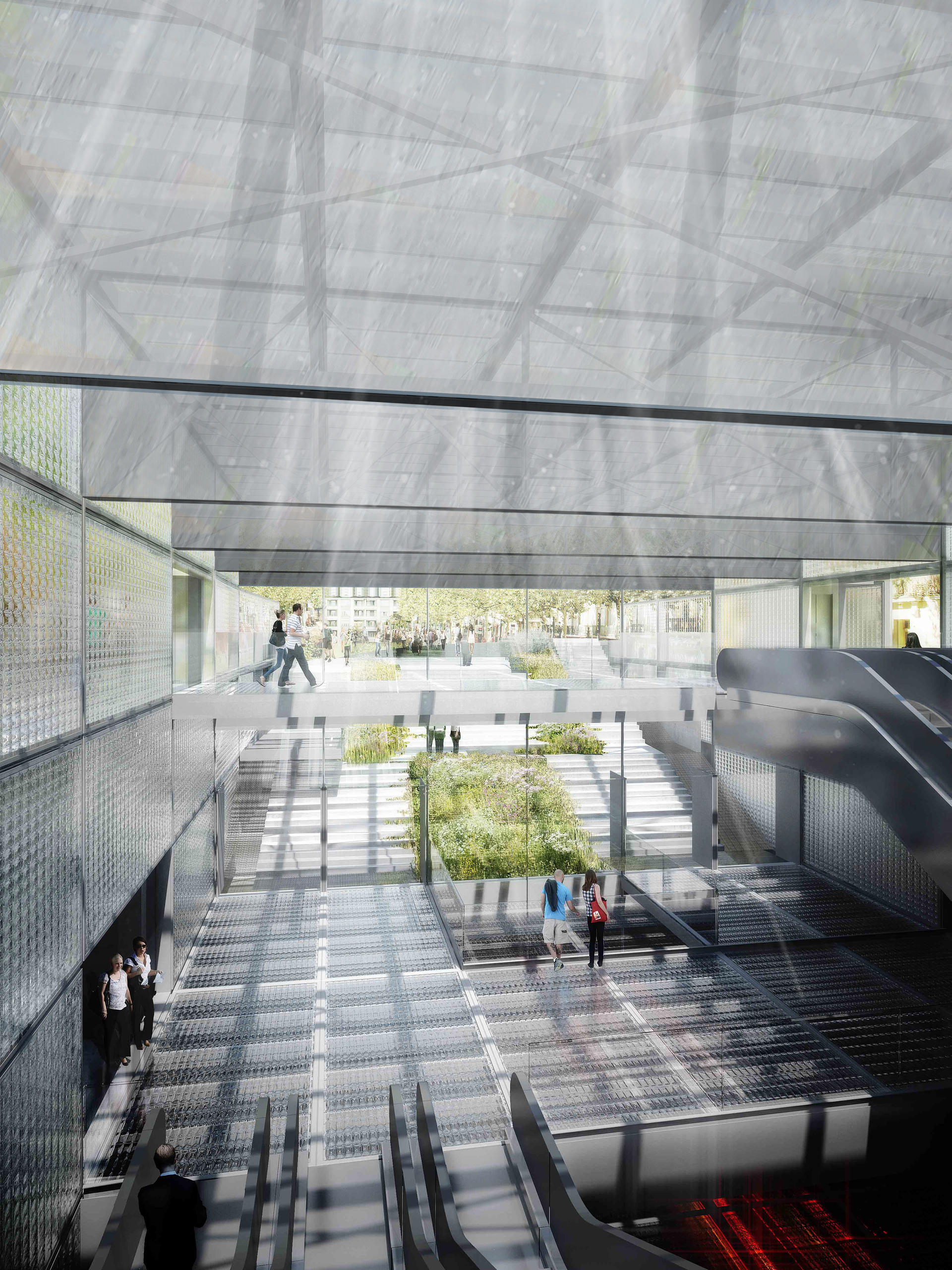
Can a cross-border rail link end Geneva’s gridlock?

Geneva’s roads are regularly snarled up in rush hour by hundreds of thousands of cars and other vehicles from neighbouring France and canton Vaud. But the end of the tunnel may be in sight as a major new cross-border rail system, known as CEVA/Leman Express, nears completion.
“It’s a nightmare,” declares Vincent Le Breton.
Every day the French waiter drives to work in central Geneva from the French town of Thonon, 35 kilometres away. But some days it can take 1.5 hours on the clogged roads south of the lake.
“I’ve been working here a year now. Before I lived in Brittany. But I’ve never seen anything like it before. There are jams everywhere.”
Switzerland’s second biggest city is at a busy crossroads with France and the Alps. Just under one million people live in the city and extended region known as Greater Geneva. With its high salaries and standard of living, Geneva is a victim of its own success and continues to attract a constant flow of people to live and work. By 2030, the region is forecast to grow by at least 200,000.
Chronic transport problems persist. Every day 550,000 people cross Geneva’s borders with France and Vaud, most in private cars. This figure should rise to 694,000 by 2020.
Officials recognise that the congested roads into the city are near saturation, especially at rush hour. Managing flows of cars, trams, pedestrians and bicycles in the densely populated centre, where most jobs are based, is like ‘precision watchmaking’, they say. A road accident or a burst water pipe, as occurred in 2012, can paralyse the centre.

More
Geneva’s cross-town traffic woes
But a transport revolution may be just around the corner.
Late last month, officials from Switzerland and France shook hands and smiled for TV cameras deep underground near the Moillesulaz border crossing in southeast Geneva. The event marked the meeting of two tunnels – one from the Geneva side and another from the French town of Annemasse – and an important stage in the new cross-city and cross-border rail link, known as CEVAExternal link, short for the Cornavin-Eaux-Vives-Annemasse project.
“This is a historic event for Geneva and the region,” declared Geneva’s transport minister Luc Barthassat. “It’s not every day we dig a tunnel between the two countries.”

(RER: Swiss-French regional trains; TER: French regional trains; TGV-IC-IR: Fast international, inter-city and inter-regional trains; RE: Regional express trains).
Construction work on the CEVA project began in 2011 and almost 60% is now ready. When it is completed in December 2019, the train systems of France and Geneva will be connected to create a seamless link between Cornavin, Geneva’s central train station, and Annemasse in FranceExternal link (video). Regular regional trains will make the 16km journey in 20 minutes, with one every ten minutes during rush hour.
But CEVA will actually form part of a much bigger local rail development plan in Switzerland and France to be known as Leman ExpressExternal link (see infobox below).
At last month’s historic meeting, French and Swiss officials struggled to outdo each other with praise for the new system.
“CEVA will change the way we move about in the future – it’s a true revolution in terms of mobility,” declared Annemasse mayor Christian Dupessey.

Officials say when it is built 240,000 people will live less than 500 metres from a station. They estimate that every day 50,000 passengers will take one of the 40 Leman Express trains criss-crossing the network.
People are attached to their cars, as they are ‘often the best means of transport available’, said Philippe Gauderon, head of infrastructure at Swiss Federal Railways.

“But whenever you put in place a regional S-Bahn-style train system, like in Basel or Zurich, suddenly there is a change in the share of transport with most people taking public transport. There is no reason Geneva is any different,” he told swissinfo.ch.
Vincent Kaufmann, a mobility expert at Lausanne’s Federal Institute of Technology (EPFL), also thinks CEVA will have a positive impact on local transport.
“It will offer a quality service that will be comparable to the Zurich S-Bahn,” he noted. “It will bring neighbourhoods closer together and offer a very good rail service to Evian and the Arve Valley region [south-eastwards to St Gervais-les-Bains]. But it will be quite mediocre to Annecy.”
Mobility 2030
CEVA/Leman Express forms part of a larger cantonal transport strategy, known as ‘Mobility 2030’, which was approved in 2013 and includes other measures like tram lines to be extended into France, park-and-ride facilities, cycle paths, a wider motorway around Geneva and a lake crossing.
In June, Geneva citizens gave their support to the idea of a lake crossing – either a road tunnel or bridge – in a local ballot, but no specific project details or budget were presented. The canton is moving ahead with the project despite recently receiving a lukewarm welcome from the boss of the Federal Roads Office.
*Barbara, who works as a security guard in Geneva but lives in Annecy, says she will probably use the Leman Express, despite it not making her journey any shorter.
“People will change their habits. I’m from Strasbourg and when the tram was introduced people moaned a lot but now everyone in the city uses it rather than their car,” she said.
It will take time, said Damien Cataldi, a mobility analyst at Geneva’s transport department. He says there will be initial ‘inertia’ from car owners that will probably last 4-5 years, but eventually more people will switch to public transport.
His service predicts the percentage of people taking public transport across all Geneva’s borders to rise from 12% (2011 figure) to 18% (2020) when the regional network is operational.
Kaufmann, however, believes the French and Swiss authorities have actually underestimated the eventual impact of CEVA, focusing too much on the delays, opposition and costs.
“My prediction is that the French local authorities will be unable to cope with the high demand and there will be strong pressure from users to improve local transport once CEVA starts,” he added.
*name withheld
CEVA/Leman Express
In 1881, a treaty was signed between France and Switzerland to build a rail link between Annemasse and Geneva but it never saw the light of day due to false starts and political disagreements.
The plan was revived in the 1990s under a project known as CEVAExternal link, which stands for Cornavin-Eaux-Vives-Annemasse. Construction work finally started on the Swiss side in November 2011 after Swiss courts rejected the final pleas from angry residents worried about the project’s impact on the homes. So far, 60% of CEVA has been completed. Full completion is expected by December 2019.
There will be a fast regional train link between Cornavin, Geneva’s central train station, and Annemasse in France (20 minutes). But it will extend much further. CEVA will form part of a bigger local rail development plan, to be known as Leman Express, which will extend over 220km and include 45 stations, connecting more than a million people in the Swiss cantons of Geneva and Vaud with the Auvergnes/Rhône-Alpes region of France.
The budget for the Swiss portion, which extends over 14km and includes two tunnels, five new stations and two bridges, is CHF1.567 billion. Canton Geneva is covering 44% of this and Bern is funding the remainder. The French section’s cost of €234 million, is being funded by the French state, the regions and local bodies. It includes the modernisation of Annemasse train station and upgrading of the rail link to Evian, south of Lake Geneva.

In compliance with the JTI standards
More: SWI swissinfo.ch certified by the Journalism Trust Initiative































You can find an overview of ongoing debates with our journalists here . Please join us!
If you want to start a conversation about a topic raised in this article or want to report factual errors, email us at english@swissinfo.ch.